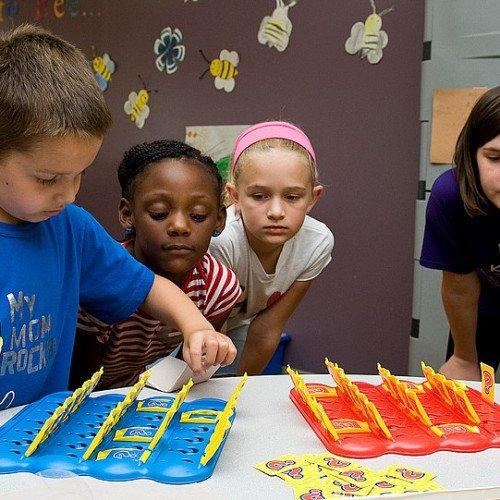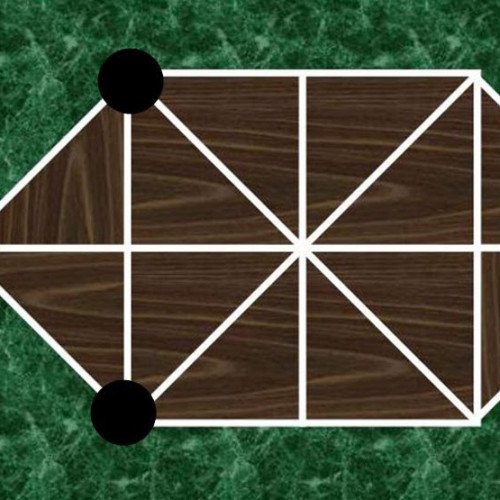GUESS WHO VS HARE AND HOUNDS

GUESS WHO
Guess Who? is a two-player character guessing game created by Ora and Theo Coster, also known as Theora Design, that was first manufactured by Milton Bradley in 1979 and is now owned by Hasbro. It was first brought to the UK by Jack Barr Sr. in 1982. The classic edition is currently being produced by Winning Moves Games USA. Each player starts the game with a board that includes cartoon images of 24 people and their first names with all the images standing up. Each player selects a card of their choice from a separate pile of cards containing the same 24 images. The objective of the game is to be the first to determine which card one's opponent has selected. Players alternate asking various yes or no questions to eliminate candidates, such as: "Does your person wear a hat?" "Does your person wear glasses?" "Is your person a man?" The player will then eliminate candidates (based on the opponent's response) by flipping those images down until only one is left. Well-crafted questions allow players to eliminate one or more possible cards. Special editions which have different faces have been released, including Star Wars, Marvel Comics and Disney. There are smaller, "travel" editions which have only 20 different faces. In 2008 and 2010, extra and mix and match games were released. A computer game based on the series was released in 1999 by Hasbro Interactive. In the United States, advertisements for the board game often showed the characters on the cards coming to life, and making witty comments to each other. This caused later editions of such ads to carry the spoken disclaimer line "game cards do not actually talk" in order to meet Federal Trade Commission advertising guidelines requiring full disclosure of toy features unable to be replicated with the actual product.
Statistics for this Xoptio

HARE AND HOUNDS
Hare games are two-player abstract strategy board games that were popular in medieval northern Europe up until the 19th century. In this game, a hare is trying to get past three dogs who are trying to surround it and trap it. The three dogs are represented by three pieces which normally start on one end of the board, and the hare is represented by one piece that usually starts in the middle of the board or is dropped on any vacant point in the beginning of the game. Hare games are similar to Bear games and hunt games. One side has more pieces than the other with the larger side attempting to hem in the smaller side. The smaller side though is usually compensated with more powers. Where Hare games differ is that the hounds can only move forward or sideways, and not backwards. The hunters in the Bear games can move in all directions. Furthermore, the dog in the Hare games cannot capture any of the hares, unlike the tigers, leopards, jaguars, and foxes in the hunt games which can capture their respective prey counterparts. There are several different Hare game boards depending upon the country of origin. Many preferred the narrow double-ended spearhead-like boards with orthogonal and diagonal lines running through them. There were several variations on this design. However, one in Denmark used a round board, and another design is found in Latvia. Hare games are referred to by different names. In 19th century France, a hare game that was popular among the military was called The Soldiers' Game. The dog is sometimes referred to as a hound, and hence the alternative title to this game as Hare and hounds. Other names are French Military Game, Game of Dwarfs, The Devil among tailors, and Trevolpa or Volpalejden . As the rules of the game are simple to program, there are many electronic implementations of the game. The second link below allows you to play this game. In this computer game, the hares and hounds are reversed. Instead, it is the hounds attempting to surround and immobilize the hare.